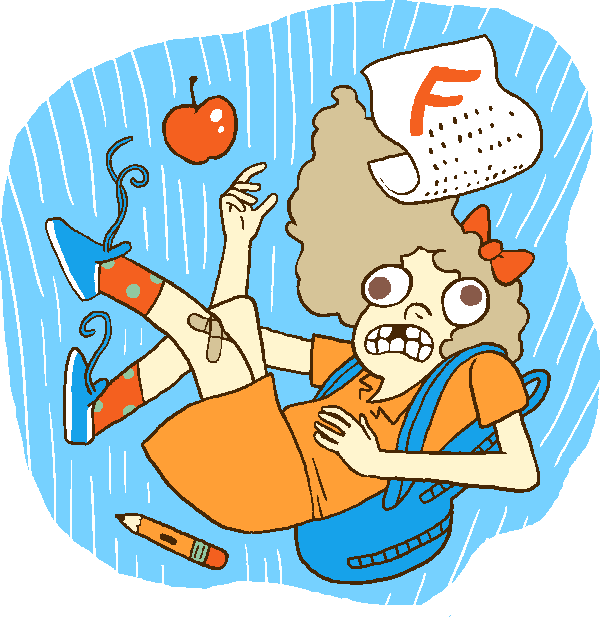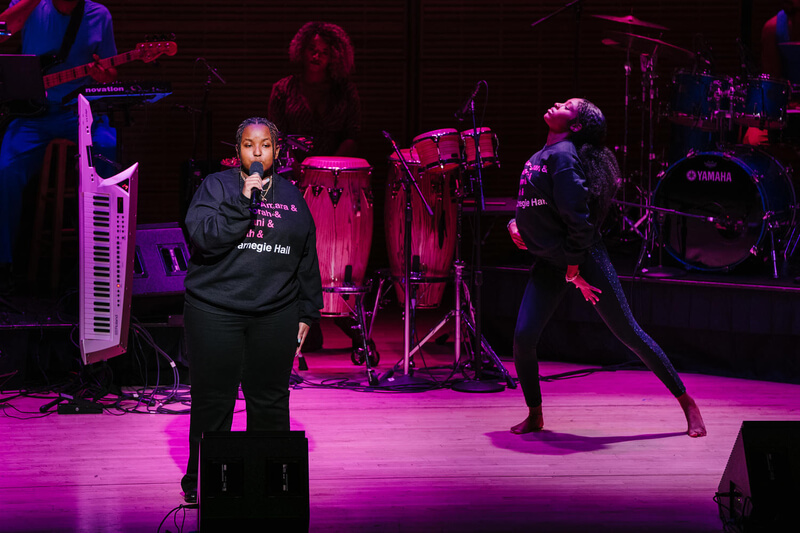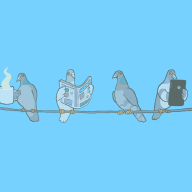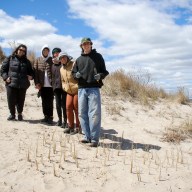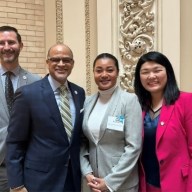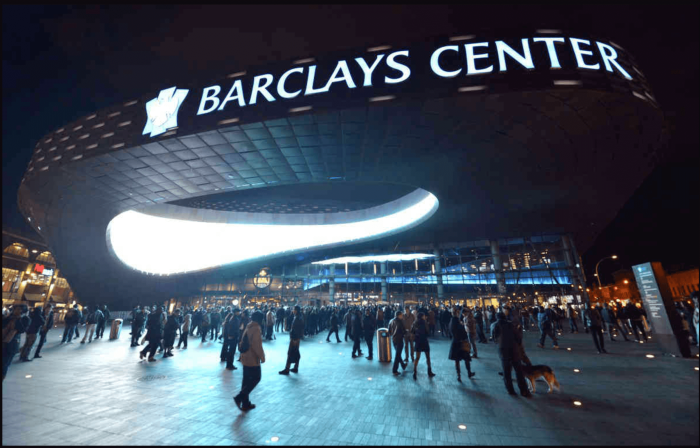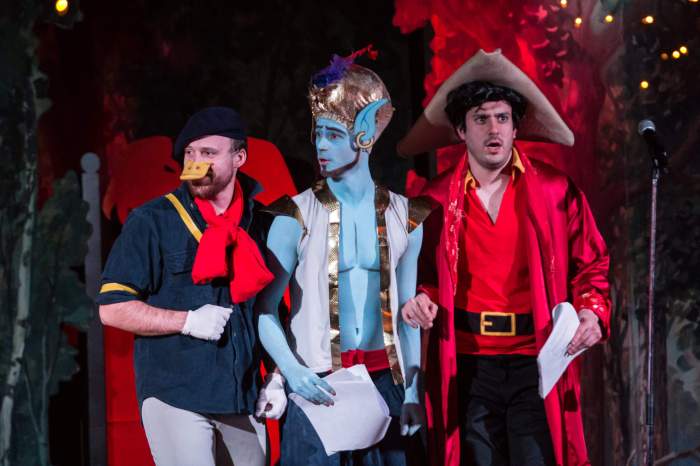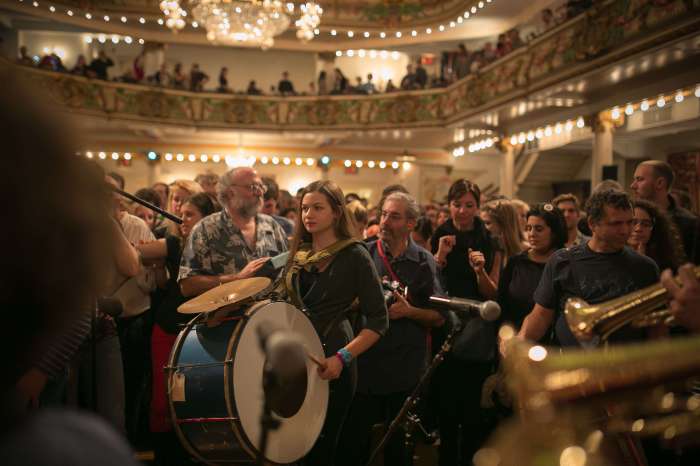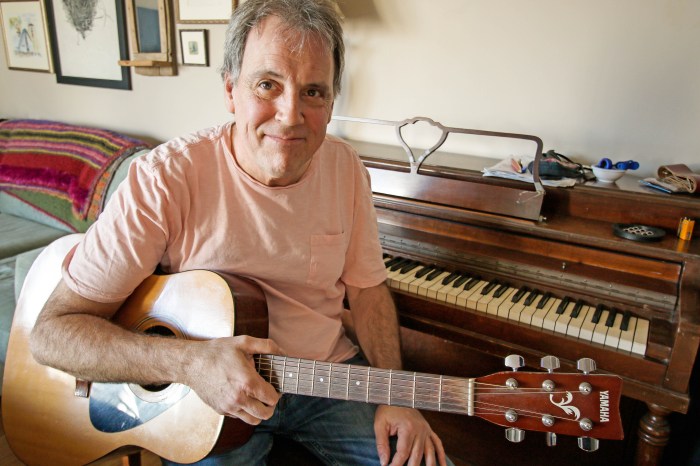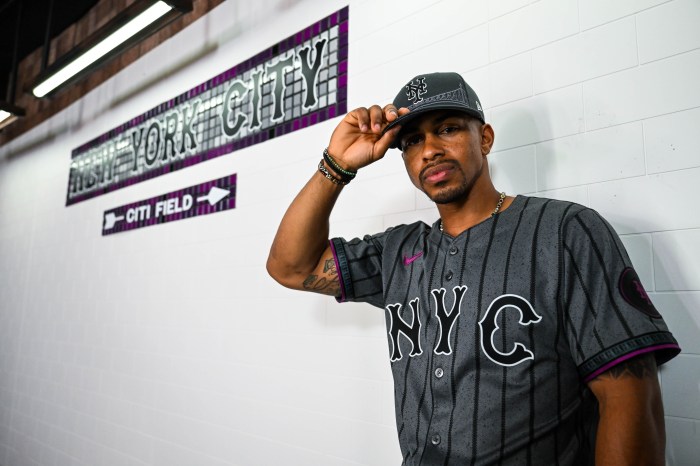A pair of Brooklyn high school sophomores did their school proud back in February, when they took to the stage at the revered Carnegie Hall to perform their own, original work. But the girls and their music teacher worry that the arts education that propelled them to one of the world’s most famous stages is becoming less and less accessible to their peers.
Ainka-Amara Gillespie and Imaani Russell, both 16-year-old students at Uncommon Collegiate Charter High School in Bedford-Stuyvesant, performed “AfroCosmicMelatopia,” part of Carnegie Hall’s Afrofuturism festival, which explores the intersection of Black culture, technology, and visions of the future. Last fall, Gillespie’s music teacher Briony Price asked if she’d be interested in collaborating on a piece for the festival.
In 2019, Price was adjusting to a high school teacher role in the US, having grown up in London. At Wednesday afternoon study hall, her student Deborah Adesodun gave Price a piece of creative writing she wrote during the block. The piece talked about a young Black woman named Maleeka. Titled They Say, Deborah’s writing later became the basis of the song Gillespie performed in Carnegie Hall three years later.
Once the poem was done, Russell, who has been dancing since childhood, choreographed an original dance to accompany it. The pair took to Zankel Hall at Carnegie Hall on Feb. 27 to perform their collaborative work.
But, statistically speaking, the arts among their peers is dying.
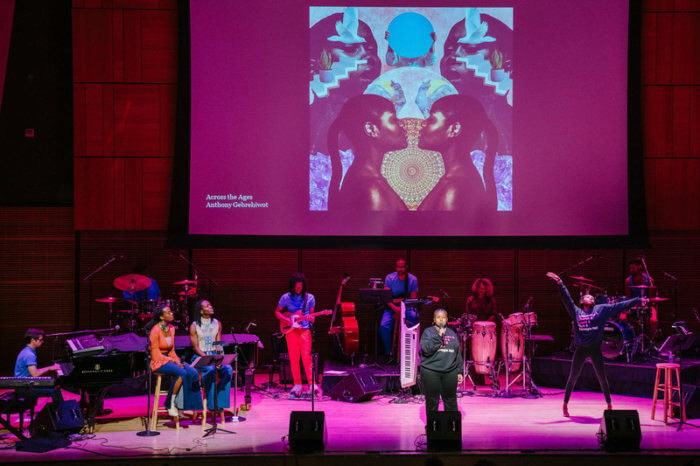
While Gillespie and Russell live passionately through dance and music, Price sees an increasing “missed opportunity” for her high school students.
New York falls into the 42 percent of US states that do not define the arts as a core or academic subject, according to The National Center for Education Statistics. On the flip side, 53 percent of tourist spending in the state is spent on restaurants, shopping, arts, culture, and entertainment, the state comptroller’s office reported last April.
Gillespie now has two years left in the public school system before graduating. She had never had a singing lesson she started working with Price when she started high school.
“I’ve never heard of Carnegie Hall,” Gillespie said. “[But] my mom’s like, ‘Once you’re in Carnegie, you’ve made it.’”
In her piece, Gillespie defined beauty, and her sights for the future, as a Black 16-year-old in her lyrics. She seeks to “normalize,” watching as the Black Lives Matter movement is “on and off,” that “it gains recognition, then it’s off the map.”
Specifically in her own life, Gillespie wants Black girl’s hair normalized — and for people to stop asking about “getting [her] hair done” when it’s down.
“What you see, or what you have in your mind about yourself, is not always what’s going to be expressed on the outside,” Gillespie said.
After graduation, Gillespie hopes to attend a university for liberal arts.
“My [dream] is to do everything. I know people say it’s impossible,” Gillespie said. “But I’m a multitasker, so I think I’ll manage.”
Russell began training in dance at eight years old. Having lived in New York all her life, Russell hopes to leave the state for university to study law, while also pursuing dancing and modeling “on the side.”
She said her largest encouragements are her dance coaches, her mother, and her own drive to “be better.”
“I just want to be well known,” Russell said.
Russell stepped onto the stage toe-pointed, performing a lyrical dance while her classmate Gillespie sang and Adesodun’s poem played. Her movements looked fluid, as though attached to a single string, bending and spinning in continuous motions, matching the pace of lyric and line.
“I’m just trying to take the lyrics and kinda embody what the poem is saying, the topic of the poem, through dance,” Russell said. With Gillespie, Russell asks for Black hair to be normalized and there to be “incorporations of Black African American people in higher [positions].”
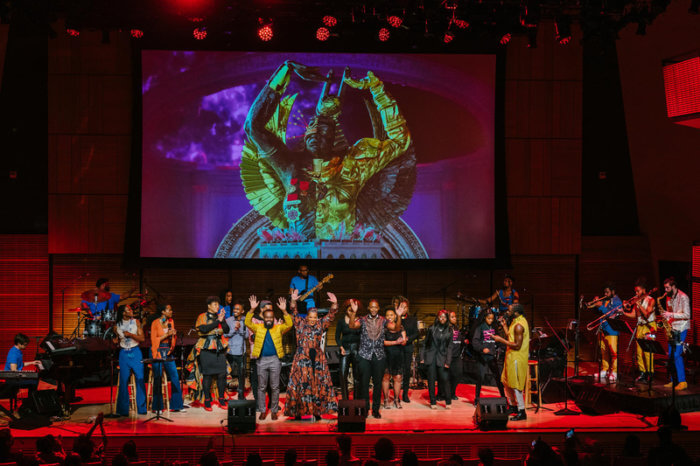
“Things like our bonnets and scarves are seen as ghetto and stuff like that,” Russell said. “[Hair] represents us and our hair is definitely a big part of us because, you know, the afro, the kinkiness, it was usually seen as out of place. But it’s our beauty.”
Of the three main feeder middle schools for Uncommon Collegiate, Price said none have music programs. Packing content into her high school music classes, Price said she is trying to build student’s portfolios who lack “a lot of the foundational training.” She fears her graduating students facing an “inequity” studying alongside other university students who’ve studied the arts years longer.
The New York State Senate introduced Bill S5770 in 2019, “Adding arts and music education into the curriculum for public school students.” Referred to the Senate’s Education Committee twice, the bill has not yet passed.
While in waiting, students enrolled in public music classes continues to decline. Total students enrolled in public music education from kindergarten to grade 12 had decreased by 22 percent from 1975 to 2014, according to the New York State Education Department. If this trend continues, students taking music in school will drop one percent every two years.
Opportunities to perform in well-known spaces like Carnegie Hall gives Price and her students a boost.
“It’s exciting though,” Price said. “I feel like Carnegie does a lot to build partnerships, especially across other boroughs, to help cultivate new music in schools.”
Price often asks her students, “Hands up if you’ve heard of Carnegie Hall.” One or two hands will go up in the class, she said. She walks to the classroom window, where she can see Manhattan.
“It’s just over there, you can see like on the skyline where 57th [Street] is,” Price said. “It’s a big deal.”


